Category: Uncategorized
Long Term Leases And How They Can Help Your Business
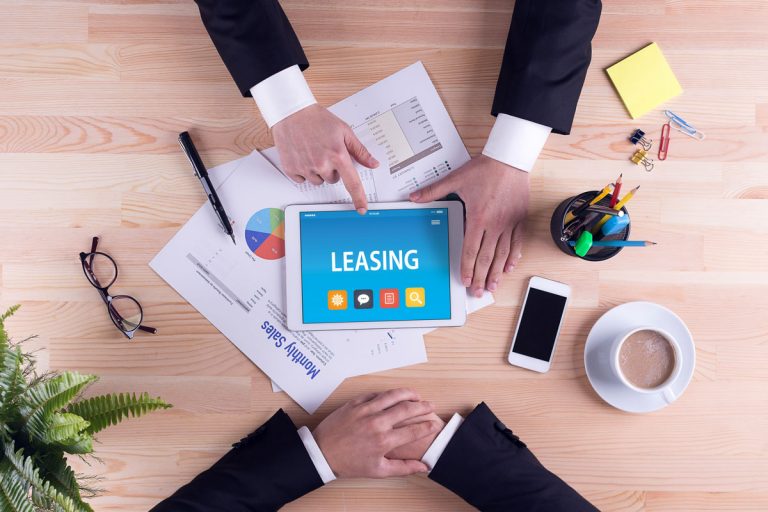
Offering your customers more payment options can increase your sales and customer satisfaction levels. And if you sell large or expensive products like equipment or heavy machinery, you might be able to boost your business by offering long term leases.
Here’s everything you need to know about long term lease agreements — including what they are, who should offer them, and how to provide leases without causing your business financial strain.
What Is a Long Term Lease?
A lease agreement is a contract between a business and a customer. It allows the customer to use an asset for a set amount of time in exchange for periodic payments made to the business (the asset owner).
A long term lease is a lease that lasts for longer than a year. It could last one year, five years, ten years or anywhere in between. Vehicles and equipment are examples of assets you can lease with a long term agreement.
Depending on the agreement, at the end of the lease period, customers will usually return the asset to the business. But they may also have the option to purchase or upgrade.
Should You Offer Long Term Leases to Your Customers?
The Equipment Leasing and Finance Association estimates at least 80% of businesses lease some of their equipment. So if your business sells commercial equipment or machinery, you could consider offering long term leases to your customers.
Leasing isn’t usually worth it for smaller items with more affordable price tags. However, consumers and businesses alike are often drawn to lease larger, more expensive items.
Benefits of Long Term Leases
Offering long term leases on your assets can be hugely beneficial, not just for your customers but also for your business. Here are some of the main benefits that come with offering long term leases.
Increase Your Sales
Customers often back out of purchases at the last minute because they’re worried about the expense. But if they have the option to lease as well as buy equipment or assets, the cost is no longer as daunting.
Lease agreements involve regular (usually monthly) payments of a set amount. These instalments are more affordable for most businesses than one large upfront cost. And affordability is attractive to any customer.
Leasing options can capture those sales that might otherwise have drifted away from your business at the last minute.
Customer retention
At the end of lease agreements, you can give customers the option to purchase or upgrade the asset they’ve been leasing. This offer can be a tempting one and just what you need to capture repeat business.
Gain a Competitive Edge
It’s not every business that offers its customers long term leases. So if you do decide to start offering leases, you’ll quickly find you’ve gained a competitive edge over your competitors. With more payment options, customers are more likely to choose your business over other suppliers — they won’t feel the need to shop around for a better deal.
Improve Customer Satisfaction
By offering long term leases, you’re opening up new opportunities for your customers they otherwise couldn’t afford. With leasing, state of the art equipment becomes accessible to a wide range of businesses. And by helping your customers’ businesses thrive, you’ll improve your customer satisfaction levels and increase your chances of positive reviews and recommendations.
How to Offer Long Term Leases
If you’re considering offering long term leases to your customers, you might come across one main obstacle: cash flow. Providing customers with an asset before receiving the full payment can leave you short on cash. So if you want to offer leases to your customers, it’s best to work with a finance provider.
Working with a finance provider means you’ll receive the full lease amount upfront while your provider will receive the monthly instalments.
Start a Conversation Today
If you have a vision for your business but are struggling to find a finance option to suit your needs, here at Tradecredebt® we can offer a degree of flexibility that banks simply cannot. Start a conversation with us today, and see how Tradecredebt® Asset Finance could work for your business needs.
Download Book Now
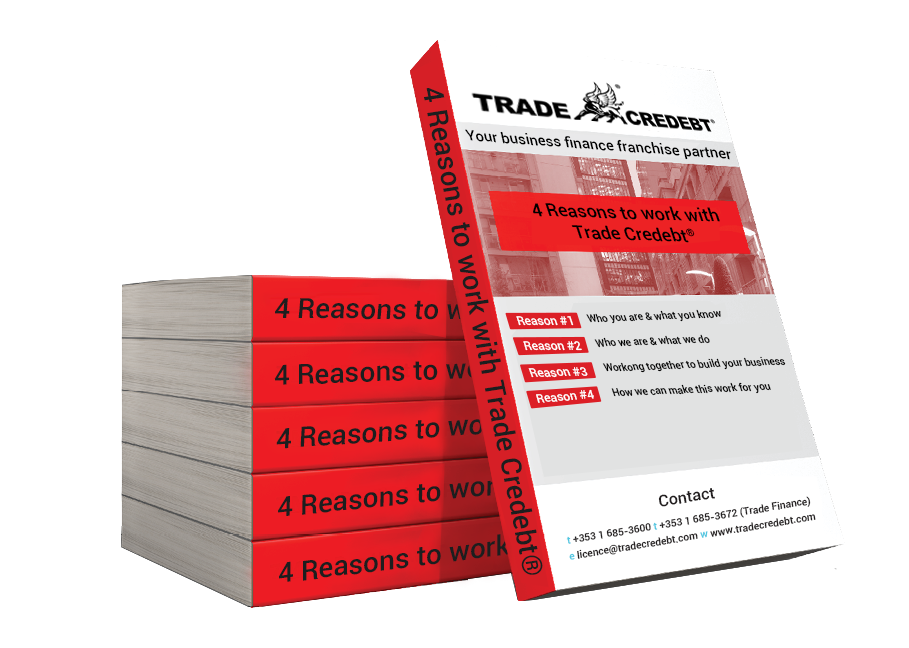
Popular Post Like This
More Posts Like This
Energy Storage Systems: The Backbone of Reliable, Low-Carbon Energy for Homes and Industry
The Growing Coffee Trade: How Sustainable Practices and Financing Solutions Drive Global Market Expansion
Equipment Financing for Start-ups: The 7 Things to Know
Starting a business brings many responsibilities from financing until turnover. Each of the stages needs attention. However, financing a start-up has become easier. For example, businesses such as restaurants need commercial kitchen equipment. They need equipment financing to launch their start-up. Equipment financing is an ideal choice for existing or new businesses. However, there are pros and cons. This article reviews equipment financing and how it works.
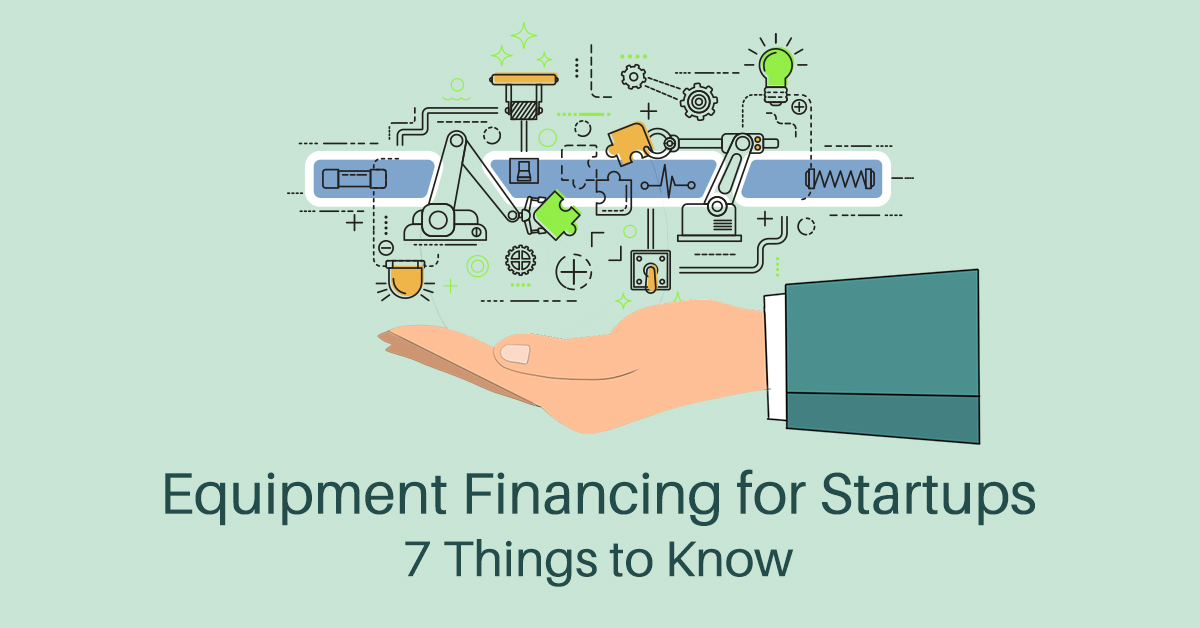
What is Equipment Financing?
With equipment financing, new equipment can be bought and used as security against a loan. The acquired equipment can be used to generate income. With these earnings, the loan can be repaid on a monthly basis at a specific rate of interest.
The loan amount is equal to the value of the equipment. However, the interest rates can differ from 8% to 30% depending on the overall value of the equipment. Also, this type of loan has a relatively simple approval process, and the loan amount can be available in as little as in 2 days.
Why opt for Equipment Financing?
Start-ups seek equipment loans for various reasons. However, it is essential to know when this kind of loan will be approved.
One of the other reasons can be to replace old equipment that has stopped working. Another reason for seeking this kind of loan can be to expand business operations. In this scenario, the equipment required will need to be capable of increased production. It is important to be specific about this, before applying, because the lender will want to know the requirements.
How Does Equipment Financing Work?
When seeking equipment financing, the loan value is used to buy the equipment for your business. General business finances can be used for a wide range of purposes. Equipment finance can be utilized only for business equipment.
The equipment bought is used as security for the loan. This is one of the drawbacks of equipment financing. The lender offers the amount to buy the equipment at pre-defined terms and conditions. These terms may include the details about periodic payments, along with interest and principal for a fixed term. Failure to make the monthly payment can result in the lender reclaiming the equipment. They can also sell it off to recover losses.
Types of Equipment Financing
Equipment Leasing
With equipment leasing, records of upgraded resources can be conveniently kept. It also brings benefits of servicing and tax efficiency and the ability to effectively manage cash flow.
Equipment leasing is divided into two categories; operating leases and finance leases. Both provide a wide array of timeframes and levels of obligation, which depend on the requirement.
Hire Purchase
With hire purchase equipment financing regular payments are made in installments for the equipment until it is eventually owned. It differs from equipment leasing in that it will be visible on the balance sheet from the outset. Therefore, to own the asset or its value for the long term, hire purchase can be a good option.
Download Book Now

Plant Equipment Finance
Plant equipment finance is an ideal choice for heavy equipment. Construction and manufacturing businesses generally seek this type of equipment financing.
Who can Qualify for an Equipment Loan?
Like all finance options, equipment financing has certain qualifying conditions. Typically, businesses who looking for equipment financing must have a 600+ credit score to get a competitive rate of interest. Additionally, the company must be active and running for a specific period and have a turnover above a minimum threshold.
It is always advisable to do some homework before applying for an equipment loan, as the figures will vary. Also, it is essential to keep all documents updated when they are to be submitted. . All documents related to bank statements, credit history, equipment quotes and others must be ready.
Pros of Equipment Financing
Tax Efficiency
Businesses benefit from the tax efficiency of equipment financing when they decide to finance and not to purchase. This is because when they lease an asset, it is a monthly expense and not an asset on their balance sheet.
Get Funds to Repair, Purchase, or Lease Equipment
Even when the business is established, it may not have sufficient capital to spend on equipment. Equipment financing provides the required cash swiftly for the purpose of repair or purchase.
With smooth cash flow, business equipment can be purchased, leased or repaired without affecting annual revenue.
Scalability & Flexibility
When the business expands due to equipment finance for one asset, it may make access to future finance easier. Thus, equipment financing is effectively helpful in boosting the growth of your business.
No Additional Security Required
When seeking traditional loans or other business loans, an asset must be provided as collateral against the loaned amount. However, this is not the case with equipment financing. The equipment may be used as security. As a result, it can reduce risk.
Helps Spread the Cost of Purchase
For any business owner, cash flow is a major concern, especially when equipment purchases are necessary. With equipment financing, it is easy to spread the cost, which will alleviate the issue of cashflow. It is because the lender will make the finance available within 2 days, so the company’s cashflow is unaffected.
Boosts Future Sales
An equipment loan can enhance the overall productivity of the business. For example, in the manufacturing sector, a new piece of additional equipment may help to complete orders faster. Also, when the customer base is grown, overall production and revenue will grow too. Thus, equipment finance is can help the business to become more profitable in the long term.
Cons of Equipment Financing
Higher Rates than other finance
Equipment financing usually offers higher rates than other traditional business finance. If the business’ credit score is high, the company may be able to avail of a good rate of interest.
The Use is Restricted to the Equipment
Unlike other traditional finances, an equipment loan can be used only for the specific equipment. It cannot be used for any other business operations or purpose.
Summary
Unlike traditional business loans, equipment finance is provided for a specific purpose. Even when they are not versatile, they can be quite profitable for a wide range of businesses. However, it is significant to make a survey about the type of finance you intend to take for your business, considering all the relevant requirements.
Moreover, it is crucial to determining all the criteria related to the business before taking the plunge.
Popular Post Like This
More Posts Like This
Turning Plastic Waste into Value: The Growing Global Trade of PET Bottles and LDPE Plastics
Energy Storage Systems: The Backbone of Reliable, Low-Carbon Energy for Homes and Industry
The Growing Coffee Trade: How Sustainable Practices and Financing Solutions Drive Global Market Expansion
Brexit and Trade: The Impact on The UK and The EU
There are some clear impacts of Brexit on the way trade used to happen between the UK and the EU and the UK and the world. In the following blog, you will get to know how Brexit and trade are interrelated, how it was introduced in the UK and the impacts of Brexit on UK Trade & EU Trade.
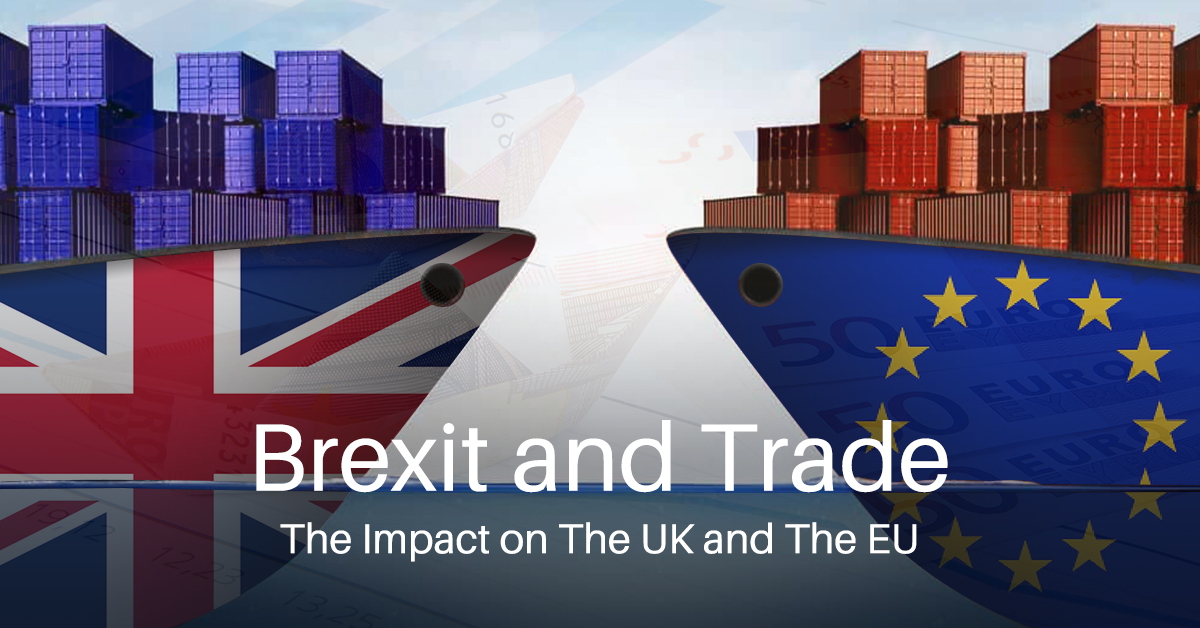
WHAT IS BREXIT?
Brexit means the split of the United Kingdom from the European Union. The term Brexit was first coined by former lawyer Peter Wilding who put the two words, Britain and Exit, together and wrote about it in May 2012.
Former Prime Minister of the United Kingdom, David Cameron, fulfilled his manifesto pledge and brought a referendum in 2016 on continuing membership with the European Union. The leave votes were in the majority and David Cameron resigned. He was then succeeded by Theresa May, who became the 2nd woman Prime Minister of the United Kingdom.
After voting in favor to leave the bloc, the UK finally moved out of the European Union on 31st January 2020, and became the only country to leave the bloc formally.
THE PROCESS OF WITHDRAWAL
The resignation of David Cameron paved the way for a new government. Theresa May, as the new Prime Minister, then formally notified the European Union about the exit.
The new government of Theresa May started the process of leaving the EU on March 29 2017, by asking permission from the parliament to invoke article 50.
The UK negotiated to leave the EU customs union and single market in the withdrawal agreement. However they could not get ratification from the British Parliament as the Labor party MPs wanted to maintain a customs union. Issues were also raised about Irish Borders .
After failing three times to get the withdrawal agreement from the parliament, Theresa May resigned and was succeeded by Boris Johnson. Boris Johnson who sought some changes, and after a third Brexit delay, the withdrawal got approved by the UK on 23 January and by the EU on 30 January. It then came into force on 31 January 2020.
The UK and EU underwent a transition period to adapt to the new policies, so that cross border trade is not hampered.
What if there had been a no-deal exit?
Europe has been the most crucial source of foreign investment for Britain. It is also its largest export market.
Leaving the EU without any trade agreement could have led to some tragic situations for trade and business, creating confusion about the rules regarding the movement of goods across the English Channel. Thus the two parties had to work on the deal of withdrawal before the deadline of 31 December 2020.
The withdrawal agreement proposed by the British government made it clear that the UK would not need the permanent single market membership. It would end ECJ jurisdiction, seek a new trade agreement, end free movement of people and maintain the Common Travel Area with Ireland.
The movement of goods by British companies to member countries of the EU was free from taxes and tariffs when Britain was a member. To make sure that the business in Britain did not crash due to the exit, it was necessary for Britain and the EU to agree on a deal before the deadline.
If the two sides had failed to come up with a mutual deal, tariffs would be imposed, driving up the prices of cars and farmers would have had to face problems in selling their meat to other European Union countries.
A no-deal exit could have led to a collapse in trade, causing a long line of trucks on either side of the borders and creating a gridlock at the ports.
The new agreement made it possible for Britain to avoid extra taxes and tariffs on transporting goods, although there will be increased checks and traders will be required to provide new customs documents.
Download Book Now

The compromise on fishing.
Although fishing is a tiny part of the economies of both the UK and the EU, it holds a high relevance politically. Gaining control of territorial waters of the UK was one of the primary purposes of the British Campaign.
In the recent past, the British fishing industry saw a decline in the number of people employed. This was affected by the rules made by the European Union on sharing access to fisheries.
The new agreement sought to cut 25% of EU boat fishing rights and transfer them to the UK. This process will occur in phases from 2021 to 2026.
In the first phase, 15% of the EU fishing quota will be reduced. This will be followed by a 2.5% decrease in the next years until 2026.
After the end of the adjustment period in 2026, there will be annual talks on distributing fishing rights between the UK and the EU and an arbitration system will be set to resolve fishing disputes.
The Northern Ireland border
Northern Ireland is the only land border that the UK shares with the European Union. To ease the flow of trade, a deal made in late 2019 which gave Northern Ireland a special trade status. It will continue to follow some rules of the European Union. It has added extra checks on the border. The new paperwork has posed an extra burden on the traders. Deterred by paperwork, many British companies have limited their products to Northern Ireland only.
Potential UK benefits from Brexit
The exit of the UK from the EU is obviously going to need the British government to build up new trade relations. After Brexit, the UK is not a member of the EU. This it can work on establishing its trade policy and negotiate business deals with other countries.
This will open doors to more foreign investment in the UK. The British government is already in talks with the US, Australia, and New Zealand who do not currently have free trade policy with the European Union.
Summary
The long-awaited split has finally settled. The UK is no longer on the list of member countries of the European Union. UK people are no longer allowed free movement across the borders of the EU. The UK have now created a new immigration policy based on the points system. They have also indicated some tradeable characteristics for people wanting to settle in the United Kingdom.
Brexit has resulted in new trade relations of the UK with the world. Recently the British government has shown interest in joining the Trans-Pacific Partnership (TPP11, or formally, the Comprehensive and Progressive Agreement for TPP: CPTPP) for better trade opportunities.
Popular Post Like This
More Posts Like This
Turning Plastic Waste into Value: The Growing Global Trade of PET Bottles and LDPE Plastics
Energy Storage Systems: The Backbone of Reliable, Low-Carbon Energy for Homes and Industry
The Growing Coffee Trade: How Sustainable Practices and Financing Solutions Drive Global Market Expansion
CIF Incoterms- Its Meaning And Usage In The Shipping Industry
According to Incoterms 2020, CIF or “Cost, Insurance and Freight” is a term specific to maritime shipping.
With CIF, the responsibility and cost of loading the goods on the ship and bringing it to the destination of the buyer is of the seller. When merchandise is loaded onto the ship, the CIF risk transfer occurs.
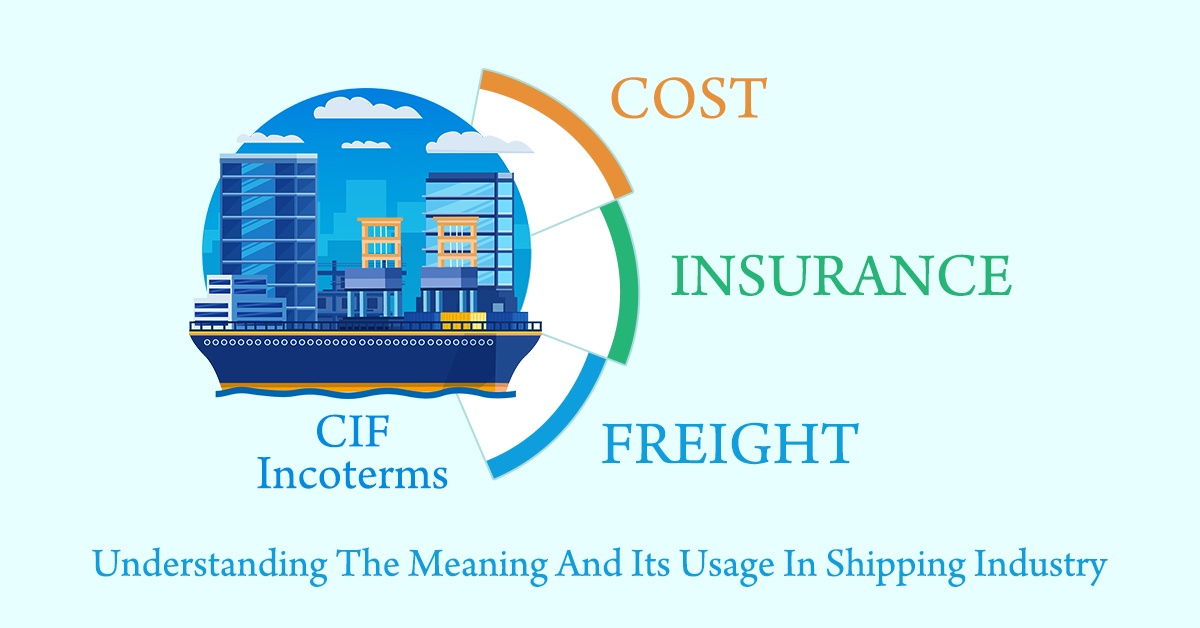
It is recommended in situations like bulk shipping, where the seller can have direct access to the ship. CIF is not suitable for containerized cargo.
It is advisable to know the different CIF shipping terms.
Updates to CIF from Incoterms 2020
The rules set for CIF date back to when international trade began. They are largely unchanged since then. In Incoterms 2020, the buyer is responsible for the risks associated with damage or loss at delivery of the goods under CIF incoterms.
The Seller, on the other hand, is responsible for the risks by taking out insurance and then providing the documents to the buyer. This enables the buyer to claim should anything go wrong.
CIF shipping terms:
- Risks and costs
For the buyer
Once the shipment is loaded onto the vessel the risks related to the shipment are passed to the buyer. The responsibility to unload the goods from the ship once it reaches the port of destination is the responsibility of the buyer.
The buyer must pay the expenses for offloading and moving the goods inland from the port. The expenses for importing goods to the destination country is the responsibility of the buyer.
For the seller
The seller must arrange and pay for the transportation expenses to reach the cargo to the port of destination. The export administration is also the responsibility of the seller.
The seller must pay for the insurance and transportation of the cargo to the port of destination. The risks associated with the movement of the cargo are transferred to the buyer once the shipment is loaded onto the ship. The export costs related to the shipment are the seller’s responsibility.
- CIF insurance
The seller has the obligation to provide insurance for the goods transported on international waters under CIF. Conversely, buyers may more secure cargo insurance that offers better cover under the CFR Incoterm. With CFR, the buyer can take out their own insurance. There is no obligation on buyers to provide the insurance as there is in the case of CIF.
Download Book Now

- CIF freight
In the case of CIF Incoterms, the seller arranges the contract of carriage at their own expense. As a result, the seller has the right to use the service contract and pay off the freight expenses beforehand. The agreement made between the buyer and the seller generally ends at the feeder port, which may be in the same or another country, or at the port of the destination country. This type of agreement does not include the movement of the goods inland.
The seller must provide a transport document to the buyer as per the CIF agreement. This type of document works as the bill of lading, stating that delivery has been made. It is also proof of the discontinuation of risk.
Wherever possible, it is advisable to try to ensure that the requirements of the documentary credit terms are adhered to by a bill of lading.
How CIF Incoterm is used in the shipping industry & how it works:
CIF obliges the seller to organize everything needed to move the cargo from a destination to another. The destination is mutually agreed upon by the seller and the buyer.
As Incoterm CIF is applicable only for waterway transportation, it is important to ensure that the destinations can be reached by water.
- The seller has certain obligations under the CIF. They typically include: Getting into contracts with different carriers regarding the use of carriage
- Taking care of formalities related to export customs clearance
- Taking out and paying for cargo insurance
- Arranging the transportation of the goods from a destination to another paying these costs All the administration related to the cargo including special documentation, quotas, export permits, etc.
- Loading and unloading expenses of the cargo.
In this scenario, the risks are passed on to the buyer from the seller once the cargo is delivered. The expenses related to delivering the cargo at the destination must be covered by the seller. It is the duty of the seller to ensure that the insurance cover includes 110% of the complete commercial value of the goods.
- The buyer has certain obligations under the CIF. They typically include: Until the seller delivers the cargo on the ship the risks associated with the cargo are covered by the buyer.
- Taking care of the ship’s movement beyond the agreed destination.
- Managespecial documentation, quotas, import permits, etc.
- Responsibility for import customs clearance.
Summary
Understanding CIF shipping terms is important to know more about the relationship and responsibilities shared by buyer and seller in international trade.
Popular Post Like This
More Posts Like This
Turning Plastic Waste into Value: The Growing Global Trade of PET Bottles and LDPE Plastics
Energy Storage Systems: The Backbone of Reliable, Low-Carbon Energy for Homes and Industry
The Growing Coffee Trade: How Sustainable Practices and Financing Solutions Drive Global Market Expansion
Freight Forwarders and NVOCC â What Is The Difference?
Often confused with being the same, freight forwarders and NVOCC are two different terms used in the maritime world globally. Both freight forwarders and NVOCC are recognized as Ocean Transportation Intermediariesby the Federal Maritime Commission (FMC*). As a result people sometimes confuse the two. But what exactly is the difference between freight forwarders and the NVOCC? In this article, we explain how freight forwarders and NVOCC are different and their role in international transportation.
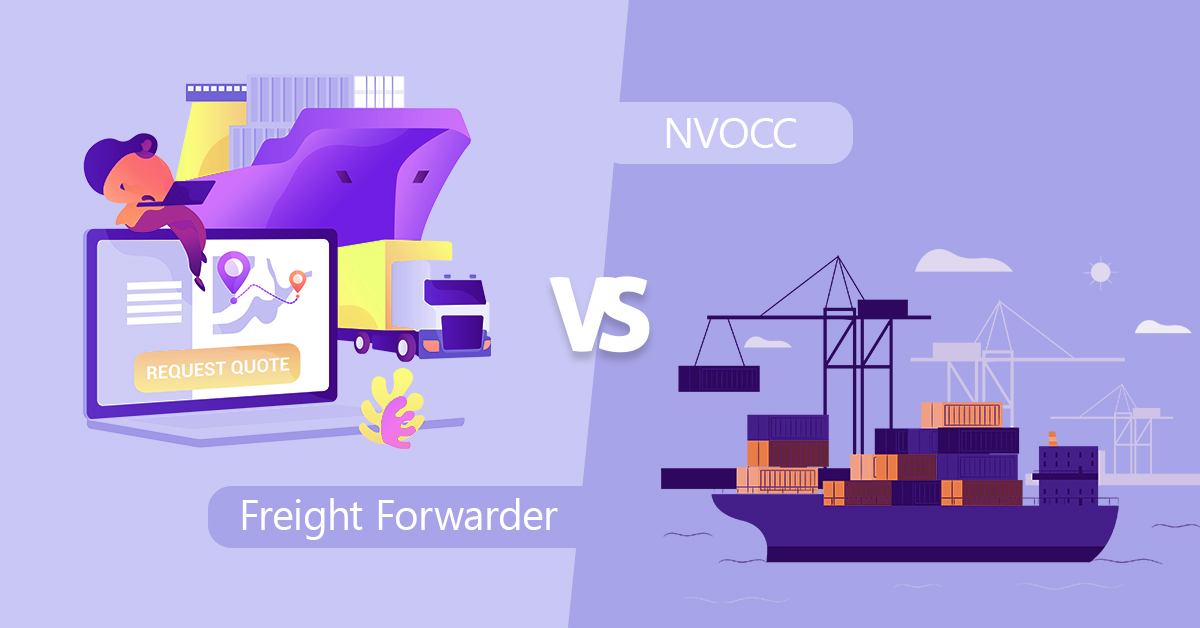
The FMC has coined the abbreviation NVOCC. It stands for Non-Vessel Operating Common Carrier. It is a carrier company that provides ocean freight services, though it may or may not own any vessels.
NVOCC is very cost-effective for small business owners or individuals who require to import or export goods but cannot afford to hire containers or ships for the purpose.
Organizing shipping for corporations and individuals, NVOCC buys space from vessel-operating common carriers and sub sells it to exporters, small shippers, or freight forwarders.
The work of NVOCC involves loading up the cargo from the customer’s place and taking it to the gateway ports. In all cases, It also looks after the final delivery of goods to the consignee at the destination.
NVOCC offers better rates and reduces the burden on smaller organizations for importing or exporting their goods across the globe. It makes the whole process of shipping goods through containers a simplified task by doing the necessary documentation on their own and the customers face no trouble going through the complex documentation procedure.
Although the NVOCC does not own transport containers, they make the whole process of transporting goods easier for the customers and ensures no loss to the client at any step of shipping the cargo and delivering it to the desired location. The NVOCC saves the client from getting involved in typical tasks like delivering goods to a container yard, proper packing and stuffing of goods, safe passage during a journey, proper deconsolidation at the destination, and clearing the goods through customs and other checks.
NVOCC also provides online track and trace service to their clients for locating their goods while in transit and gives valuable information about the sailing time that gives a great advantage to business owners for planning accordingly.
NVOCC operators must obtain an FMC license and have to apply for tariffs before starting to operate in the United States. The NVOCC’s functions are similar to carriers. Functions include issuing bills of lading and publishing tariffs. However, it does not include intermodal transportation. In the industry, the NVOCC is called the carrier to shippers and shipper to carriers.
Download Book Now

The various functions of the NVOCC –
Transporting goods from producers to end consumers with shippers as carriers.
Receiving and delivering cargos in the form of carriers.
Issuing own-house bills of lading along with other required transportation documents.
Booking space and mainline carrier shipping.
Managing payments and other charges between ports.
Consolidation and deconsolidation of containers through CFS (Container Freight Station*) or using third-party services.
Freight forwarder
A freight forwarder is a company (or person) that carries out the planning and execution of transporting logistics internationally for the shipper.
The agent or company that functions as a freight forwarder has to perform a number of tasks on behalf of the shipper, such as negotiations, container tracking, customs documentation and freight consolidation.
The responsibilities of the freight forwarder-
#1 – Shipment Tracking
The primary responsibility of the freight forwarder is to the collection of the cargo that needs to be shipped. They must also monitor the progress of the cargo at every stage.
#2 – Customs Brokerage
The forwarder must own a legal license, issued by the designated authority, in order to process the required shipping documents, including customs and port documentation, bills of lading and other associated shipping documentation.
#3 – Warehousing
Forwarders are responsible for providing a storage facility from the very beginning when the cargo is picked up at the port of loading, the port of discharge and until the cargo reaches the desired location.
Most of the larger forwarders have their own warehouses. Others may arrange the storage facility using third-party outsourcing.
#4 – Negotiations
This task requires experience. The forwarder must negotiate with the cargo carriers to make the transportation more cost-efficient.
Also, the forwarder has the responsibility to perform a lot of other tasks that are essential in the shipping process –
- Offering expert consultancy service to customers and informing them about the usage of the correct incoterms, letters of credit, licenses, permits and other general information relevant to the safe transportation of the cargo.
- Arranging inland haulage of the cargo,. This is one of the most important tasks performed by the forwarders from/to the customers’ location and port as necessary.
- Forwarders should also have extensive knowledge of cross-border cargo movement to work out the complexities of international trade.
Having a license is a prerequisite to carry out the complicated import/export activity by a forwarder A few other skills are also necessary –
- Every country has a different set of policies and protocols that need to be followed throughout the process. A good forwarder should be fully aware of these.
- They must have quick decision-making power to deliver the cargo on time.
NVOCC
The FMC has coined the abbreviation NVOCC. It stands for Non-Vessel Operating Common Carrier. It is a carrier company that provides ocean freight services, though it may or may not own any vessels.
Organizing shipping for corporations and individuals, NVOCC buys space from vessel-operating common carriers and sub sells it to exporters, small shippers or freight forwarders.
NVOCC operators must obtain an FMC license and have to apply for tariffs before starting to operate in the United States.
The NVOCC’s functions are similar to carriers. Functions include issuing bills of lading and publishing tariffs. However, it does not include intermodal transportation. In the industry, the NVOCC is called the carrier to shippers and shipper to carriers.
The various functions of the NVOCC –
- Transporting goods from producers to end consumers with shippers as carriers.
- Receiving and delivering cargos in the form of carriers.
- Issuing own-house bills of lading along with other required transportation documents.
- Booking space and mainline carrier shipping.
- Managing payments and other charges between ports.
- Consolidation and deconsolidation of containers through CFS (Container Freight Station*) or using third-party services.
The differences between freight forwarders and NVOCC
- Recognized forwarders belong to the international association FIATA (International federation of freight forwarders). NVOCCs does not have any such association.
- Freight forwarders issues their own bill of lading and other required documents based on the guidelines of FIATA. The NVOCC issues a bill of lading which does not require any defined global standards .
- Forwarders do not own and operate containers and use shipping lines. Some larger NVOCCs have their own fleet of containers.
These are the key differences between freight forwarders and NVOCC operators.
Summary
The maritime industry has taken global economic development to new heights. According to some published figures, around 80 per cent of international trade by volume and over 70 per cent of global trade by value is carried by sea and managed by ports worldwide.
There is much debate as to who offers the best and most cost-efficient ocean freight services, freight forwarders, or NVOCCs.
The pros and cons of each should be examined before a decision is made.
Popular Post Like This
More Posts Like This
Turning Plastic Waste into Value: The Growing Global Trade of PET Bottles and LDPE Plastics
Energy Storage Systems: The Backbone of Reliable, Low-Carbon Energy for Homes and Industry
The Growing Coffee Trade: How Sustainable Practices and Financing Solutions Drive Global Market Expansion
Demurrage & Detention: The Difference And Storage Charges
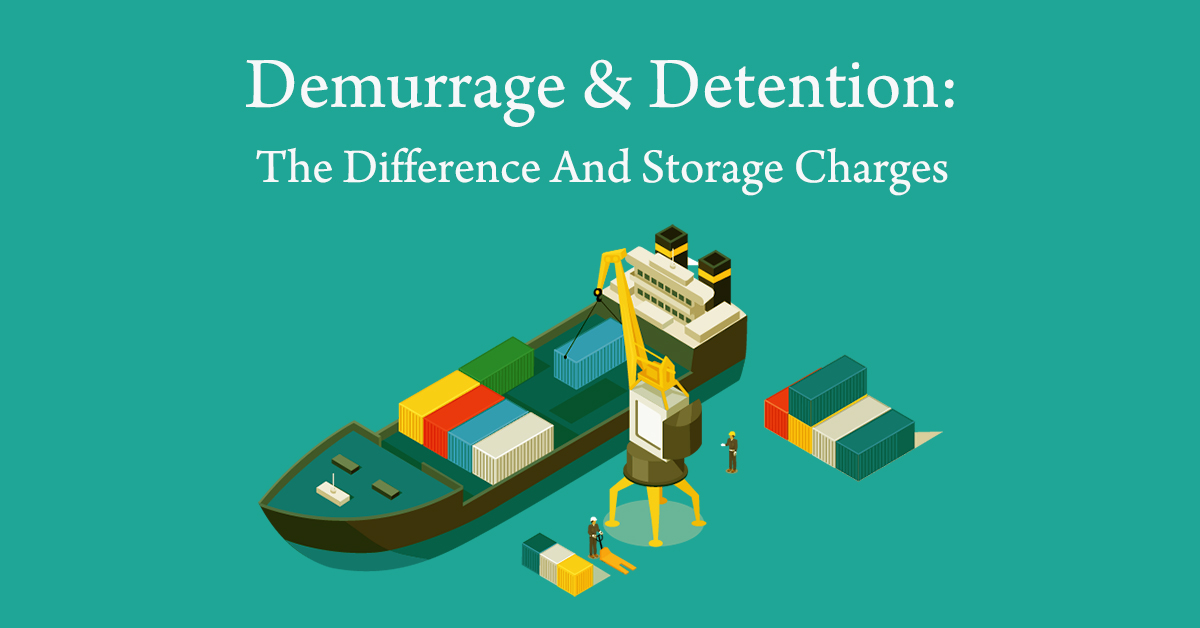
Being unpunctual with the movement of containers may cause detention and incur demurrage charges. The charges will keep increasing once the number of free days is exceeded. Freight forwarders may find these per diem charges to be a burden but for shipping lines, they work well. They ensure that containers are used efficiently. These charges were rare a decade ago in international maritime trade but things have changed significantly. Today, detention and demurrage charges can increase to the extent that they exceed the value of the container.
Additional charges are not good for business. Knowing the detention v/s demurrage charges is advisable. This will help to avoid them.
What is detention?
When the container is unloaded from the vessel and is taken inland to the customer’s location from the port, the empty container must be returned back to the port. It must be returned to the empty container depot or from where it was brought.
If the consignee fails to return the container after discharging its contents within the limited period then the carrier will charge them. These are detention charges and are charged on a per day, per container basis.
Empty containers are taken by the consignee to where they can be loaded with merchandise. It is important to ensure the loading takes place within the specified period and the container reaches back at the port for sailing. Arriving late at the port may mean the container misses its sailing time and this can lead to detention charges.
What is demurrage?
Demurrage is a charge applied by the freight provider on the importer when they fail to take away their goods from the port after unloading. For a number of reasons the containers delivered at the port may remain there for an extended period. Generally, importers are provided with a number of “free days” by the freight provider. During that time they can store containers or goods at the terminal or port.
Occasionally, containers fail to get loaded onto the ship. Demurrage, on a per container basis may be applied in these cases.
Download Book Now

What are storage charges?
Storage charges are applied at the port for storing the goods at the warehouse or in its facilities when they are collected after the agreed timeframe. Generally, a certain number of days are allotted to the importer to collect the merchandise from the port. Failing to collect the merchandise within those days will incur storage charges. In certain cases, the storage charges will be paid by a customs broker or freight forwarder on behalf of the importer. The importer will then be billed by them.
Demurrage v/s detention: Understanding the differences
It is the buyer’s prerogative to decide how they plan to get charged in the case of any expected delays. Whether it be ‘detention’ or ‘demurrage’, it is advisable for the shipping line to manage the flow of goods effectively. Shipping lines may offer ‘free days’ while charging detention or demurrage.
- For exports
The port authorities provide a free period of 7-10 days to exporters to take empty containers from the terminal and return them to the port after they are loaded. If the container is delayed by a few days the port authorities will charge the exporter with detention charges on a per-day basis.
If the exporter brings loaded containers to the port for dispatch before the agreed dispatch date then demurrage may be charged. This means that if containers arrive three days before the agreed day demurrage will be charged for 3 days.
- For imports
Importers must collect the containers from the port and take them away. Failure to do so will lead to demurrage charges. Demurrage charges will be applied by the port authorities on the containers from midnight of the day from when the free period ends. Demurrage is charged on a per-day basis.
Similarly, detention charges will be applied to the importer if they fail to return the empty containers back once they have been taken away.
Importers may be charged detention or demurrage based on the given situation.
Detention and demurrage charges globally
US ports charge higher rates. At US ports, demurrage charges are between USD 165 – USD 275 for a container of 20 feet. Charges are less at European ports. Rates are lowering in the ports of the Middle East and Asia, and are the lowest in China.
Apart from detention and demurrage charges, there are some other charges that consignees must to deal with. When a container yard or port storage area is temporarily used to store containers, port storage charges may be incurred. These charges are calculated for containers from the moment they enter the storage area until the moment they leave.
The operational and maintenance costs of the port are covered by the port dues. These expenses are passed on to ships and boats for accessing different facilities at the port. Charges are applied in the form of different fees. Some are port dues, cargo dues and tonnage dues.
Tonnage dues are charged on the basis of the weight of the vessel. Each ship must carry a tonnage certificate provided by the authority. The certificate shows the net and gross tonnage based on the International Convention of Tonnage or ICTM for Measurement of Ships (1969).
The convention is supported by the International Maritime Organization (IMO) which is followed by participating countries. They agree to follow certain rules while calculating the tonnage of ships moving on international voyages.
In order to avoid different rules, these principles and rules are applied uniformly by all abiding countries. ‘Wharfage’ or ‘cargo dues’ are charged for moving the cargo on port and accessing other facilities.
How to avoid demurrage, detention, and storage charges?
The cost of imported goods can quickly increase when demurrage, detention and storage charges are applied. Therefore it is important to know exactly when the goods will arrive.
The customs broker must be alerted about the imminent arrival of the goods.
If possible, all the information related to the goods should be provided to the freight forwarder or customs broker.
The carrier should be well informed about the arrival of the container so that it can be collected within the agreed free days.
When the merchandise arrives, the containers should be quickly emptied and the empty containers returned to their location on the port. Failure to do so will incur detention charges unless and until the carrier empties the containers and returns them to the location from where they were collected.
Negotiate the charges
Detention and demurrage charges cannot be always controlled. However, there are some ways to avoid extra costs. Instead of accepting the initial quote, it is worthwhile to negotiate with the carriers or port officials. They may provide more free days. Port officials are more likely to respond to the requests of the companies with higher cargo volumes.
Summary
For importers and exporters, understanding detention v/s demurrage charges is advisable. It is important to know their meaning and how they can affect the whole budget. Knowing when they will be charged can enable importers and exporters to prepare themselves to take the necessary steps and avoid them.
Popular Post Like This
More Posts Like This
Turning Plastic Waste into Value: The Growing Global Trade of PET Bottles and LDPE Plastics
Energy Storage Systems: The Backbone of Reliable, Low-Carbon Energy for Homes and Industry
The Growing Coffee Trade: How Sustainable Practices and Financing Solutions Drive Global Market Expansion
International Trade: Definition With Overview And Examples
International trade
The licensed exchange of goods and services across the borders is called international trade. It establishes economic links between different nations and involves the trading of consumer goods like clothing, automobiles, electronic appliances, and capital goods like machinery, and raw materials.
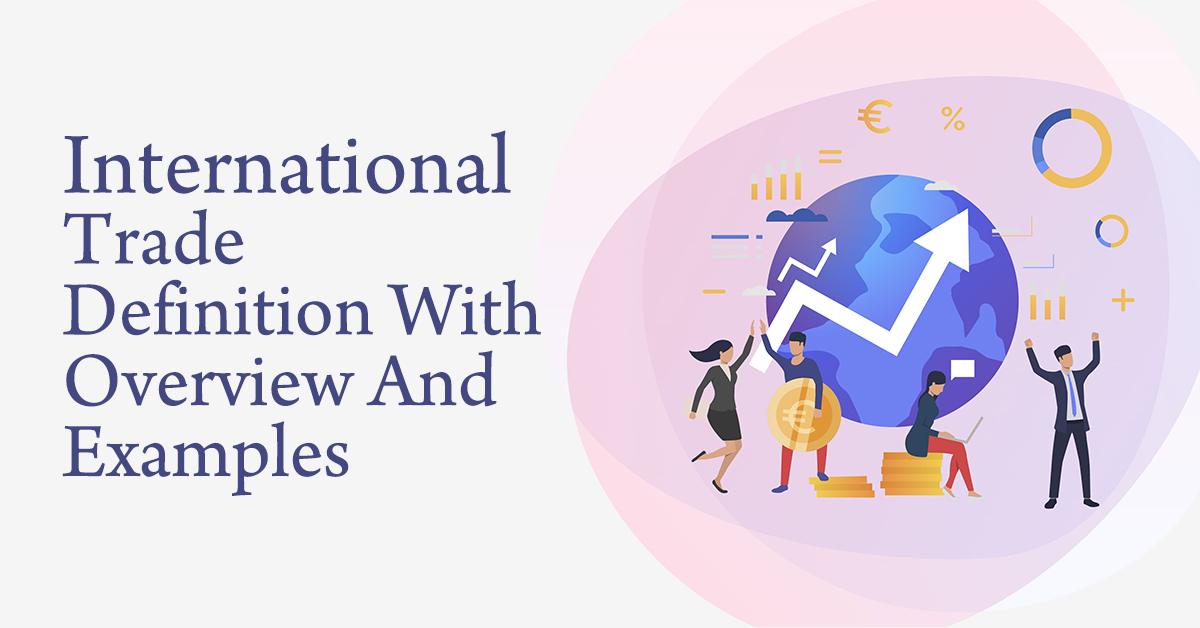
Trade is an ancient practice having traces in the history of this world that involved barter of goods in the old times and now occurs with modern financial banking systems.
International trade is facilitated by the central banks and private banking systems of involved nations and promotes better standards of living. The practice of international trade is an organized process and works according to governmental policies and various international trade agreements.
International trade involves 3 different kinds of trade import, export, and entrepot.
Understand these terms with examples of international trade using labels country A, country B, and country C.
Export
When country A supplies goods or commodities to country B involving transaction of money in exchange, it is said that goods are being exported by country A to country B.
Import
When goods are being bought by country A from country B, we refer to that as goods are being imported to country A from country B.
Entrepot
It is necessary to understand the terms mentioned above to know about this third kind of trade.
When goods are bought by country A from country B, but instead of using those goods in their own country, country A processes the purchased goods and, after adding value to it, exports the processed goods to country C, we term it as entrepot trade.
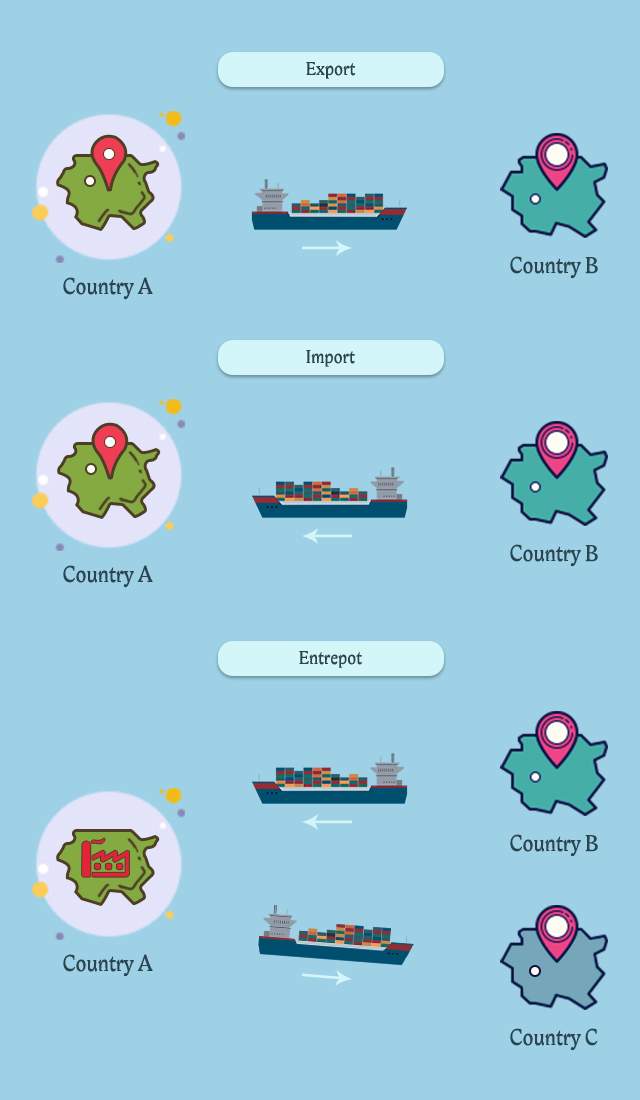
Consider a real example of an entrepot kind of trade, India buys rubber from Thailand and, after processing it, exports it to countries like Japan.
Concluding the definition, in short, entrepot trade includes both import and export and involves three different countries.
Singapore is known as a key performer in the entrepot kind of trade.
The need for international trade
International trade has made it possible for the world to utilize the resources in a much proportional manner and has established economic relations between different countries.
It is necessary to lift up all the barriers and promote international trade so that no country stays deprived of any resources. It has a shortage of and citizens of every country can enjoy better standards in life.
For example, countries in middle-east have an abundance of oil reservoirs and are counted among the leading exporters of oil in the world. These countries export crude oil to oil deficit nations so they can meet their oil demands, and this way, international trade promotes the efficient flow of demand and supply chain.
Different countries function on different operational costs depending on the availability of various resources, and thus cost of availing goods and services differs depending on the place of production.
In the case where country A has less production costs than others due to factors like technology, geography, and availability of raw materials, international trade allows people of country B and C to enjoy affordable goods by importing the same from country A.
Looking at it from a different perspective, international trade generates more employment opportunities, thereby raising the overall standards of societies of both the nations involved. This is the reason why trading giants like the US and Japan have a lower unemployment ratio.
International trade plays a vital role in contributing to any country’s GDP, and a rise in trade has positive impacts on the growth of the GDP of the trading nations.
Now, after knowing the benefits of international trade, let us now scroll down to make ourselves more aware of how international trade is measured for any nation.
There are two well-known methods for measuring or calculating international trade, which are –
Balance of trade
In this method, the total value of products imported by a nation is subtracted from the total value of products exported by the same.
Balance of payments
This method is based on the number of payments done or received by a nation. The balance of payments of any country is calculated as the total sum of payments received by it minus the total sum payments it makes to other countries.
Both of the above methods involve the calculation of data collected over a certain period of time.
Know which goods are traded the most across the borders
A significant amount of goods are traded every day in large cargo ship containers to reach the global market. From unique selling goods to heavy, bulky commodities, there could be no end to the list of goods that are traded internationally.
Refining the list, take a look at 3 of the most actively traded goods internationally –
Cars
Finished cars and automobiles are the most popularly traded goods across the globe, and the total value of the trade sums up to 1.35 trillion dollars.
Germany ranks first in terms of exporting cars while the United States imports the maximum number of vehicles.
Oil
Termed to be the most valuable resource in the world, oil is always in demand and ranks second in the list of most traded commodities.
With a volume of trading 11.8 million barrels every day, Saudi Arabia is at the top of the list of oil exporters, while China is the biggest consumer of oil and imports the highest volume of oil in the world.
Download Book Now

Integrated circuits
With a wide range of applications, integrated circuits are also among the top traded goods globally.
Hongkong is the top exporter of integrated circuits in the world, while China imports the highest quantity of integrated circuits.
Enabling the customers to enjoy a wider variety of products, international trade has grown substantially in the past and is linked with the country’s economic growth as imports and exports now have a more significant share in the GDP of a country.
Talking about international trade, free trade is also a term that requires attention.
Free trade
It is a policy by which a government promises no discrimination to imports and does not interfere with exports by using tariffs or subsidies.
Such an area with no trade restrictions due to tariffs or quotas is called free trade area.
But alongside, there are some growing concerns that arose due to free trade and which need to be taken into consideration to assist the world with a better trading experience. Problems arising with free trade are –
- Displacement effects
- Infant industry argument
- Cultural homogenization
Summing it up:
International trade has worked to make the global market barrier-free and ensures to give every nation, equal rights in getting the benefit of all the natural resources. As every nation strives to achieve economic stability, international trade has turned out to be the most important contributor to the GDP and apart from the wide spectrum of benefits, it has brought the nations closer, which therefore resulted in stronger relations between them that will definitely boost their over-all economic development.
Popular Post Like This
More Posts Like This
Turning Plastic Waste into Value: The Growing Global Trade of PET Bottles and LDPE Plastics
Energy Storage Systems: The Backbone of Reliable, Low-Carbon Energy for Homes and Industry
The Growing Coffee Trade: How Sustainable Practices and Financing Solutions Drive Global Market Expansion
Difference Between CIF and FOB and What Should You Buy
When carrying out international trade it is important to have a clear idea of the different terms used in the movement of goods. The shipment of goods is done using legal agreements. The two commonly used agreement models are CIF (Cost, insurance and freight) and FOB (free on board). Each agreement clearly defines who will be responsible for the goods while they are moved from a destination to another. It also specifies the point at which the responsibility is passed from one party to another.
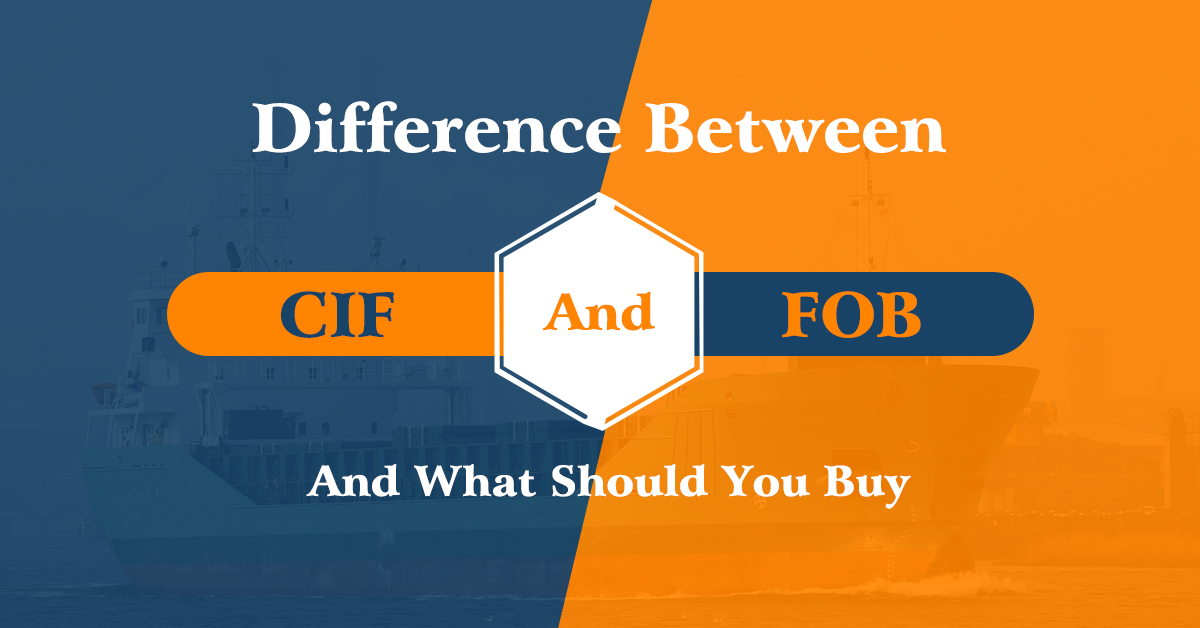
What is CIF?
“Cost, insurance and freight” or CIF is primarily the responsibility of the seller until the cargo has been delivered. This means the seller is liable for risks and insurance costs until the shipment reaches the buyer. The moment the cargo reaches the buyer’s port and is moved out, the liability and ownership get transferred to the buyer.
This means that sellers are responsible for the risks related to shipping. This includes all the necessary customs documents required by both departing and arrival countries, ensuring safe delivery of the goods at the destination country, and paying insurance costs.
What is FOB?
“Free on board,” or FOB, or “freight on board“- is divided into two parts: ‘Destination or Origin’ and ‘Prepaid or Collect’. FOB Origin is where the buyer assumes ownership of the goods from the outset. The responsibility of the buyer starts when the goods are loaded onto the vessel by the shipper. ‘FOB Destination’ is where the buyer assumes ownership of the goods when they reach their destination. This means the shipper is responsible for the goods while they are in transit.
FOB Origin is generally used where the responsibility of the cargo will be taken by the buyer once it leaves the seller.
Download Book Now

Why buy CIF?
If the importer is new to international trade and has a small cargo to transport they then generally buy CIF. This option is more convenient for importers as they don’t have to deal with shipping or other freight details. However, it is important to understand that this method may be more expensive to get goods delivered. It is the responsibility of the supplier to take care of insurance and freight. For a new importer, handling these things may be a complicated task. They can be left to the supplier. This may be the easiest and quickest way to get the cargo delivered but it may incur higher expenses. The costs are higher in this scenario as the vendor will take care of everything including their own forwarder. All of these interactions will affect the profit margin.
Once the number of CIF shipments increases it may become difficult to keep track of shipment information accurately. Issues during transit may not be handled properly by overseas suppliers. The responsibility of the supplier ends once the goods reach the destination port. If Any issues arise then unexpected expenses may have to be incurred. Importers must depend on the freight agent and the supplier.
CIF buyers may end up paying insurance and freight costs applied by the supplier. In trading, insurance and freight charges may be applied to the final invoice. They cannot be estimated. They must be submitted to customs as evidence of payment. When buying FOB you these charges will not be included in the selling prices.
Why buy FOB?
When compared with CIF, buying BOF has benefits; better control over freight costs and the freight itself. There may be a competitive edge on the freight rate. Accurate information about these costs is available in a timely manner from the freight forwarder. The logistics partner will work as a partner.
Pros and cons of CIF
Pros:
The shipping details will be managed. Shipping expenses will not have to be paid, as they will be dealt with by the seller.
Cons:
When buying CIF control over the shipping company is ceded. Also, it is up to the shipping company what route they choose to deliver the goods and the timescale for delivery. Generally, the shipping company works for the seller. This means the company has no obligation to the buyer. Should anything go wrong during the shipment the company will not be required to make recourse.
Pros and cons of FOB
Pros
FOB confers complete control over the shipping company to the buyer. This includes the route and the timescale. Should anything go wrong, the contact at the shipping company must resolve the issue. Paying for the shipment includes legal recourse in the event of an issue.
Cons
The buyer must bear all shipping costs. This may make shipments more expensive.
The difference between CIF and FOB
Both are recommended for inland and international water transport as per Incoterm 2010.
The way risk and responsibilities are transferred at the port of loading from the seller to the buyer depends on CIF or FOB you choose. In case of CIF the seller takes the responsibility till the cargo reaches the destination and also manages export customs clearance. FOB starts when the vessel reaches the destination and the responsibility is of the buyer who is the importer of the goods.
Summary
This post illustrates the freight agreement options available in international trade. CIF or FOB are two options. It is important to be careful to choose the option most suitable for the given business.
Popular Post Like This
More Posts Like This
Turning Plastic Waste into Value: The Growing Global Trade of PET Bottles and LDPE Plastics
Energy Storage Systems: The Backbone of Reliable, Low-Carbon Energy for Homes and Industry
The Growing Coffee Trade: How Sustainable Practices and Financing Solutions Drive Global Market Expansion
Trade Credit Finance: The Advantages and Disadvantages
Trade credit finance is the term for a system established between the vendor and buyer. It is where the buyer doesn’t have to pay immediately and the. Vendor specifies when the debt must be paid. It is important to know about trade credit and its advantages and disadvantages. This will provide an insight into trade finance well what it entails.
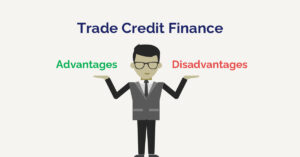
What is trade credit?
Trade credit enables importers and exporters to engage in global trade by providing the necessary finance. This finance enables businesses to pay for goods or services on time and prevent the possibility of defaulting. Trade finance is offered by different organizations, from small non-bank financiers to large finance institutions. An LC, or Letter of Credit, is a tool of trade finance. This is a promise offered by a financial institution to pay the exporter once the services or products meet the contract agreement. The importer must provide an LC to the exporter before the deal is completed.
Trade Credit – the advantages and disadvantages:
The advantages of trade credit
Drives business growth
Trade businesses must balance the risk of non-payment and the ability to pay for products and services. Trade finance can be considered working capital for the short to medium-term. It offers security when importing or exporting.
Reduces risk
Trade finance reduces the risks associated with credit and payment. It helps suppliers to fulfil bulk orders. Trade credit finance focuses on the goods and the trade cycle rather than the borrower. This means even small-sized businesses can trade large volumes through credit.
Can Increase revenue and margins
Trade finance enables supplier companies to increase the order size potential and boost revenue and margins.
Download Book Now

Can Reduce the risk of bankruptcy
Challenging creditors and debtors with deferral in payments can have a negative effect. Trade credit facilities ease the pressure on cash flows and help to avoid problems.
Diversification of the supplier network
The global marketplace accommodates manufacturers, distributors and traders. Trade finance increases the flow of money into the system. This allows business owners to diversify their supplier network and maintain risk mitigation structures. Trade finance drives efficiency in markets while boosting competition. It creates a safer framework for increasing trade volume.
Discounts for fast payments
Many trade credit agreements offer a discount when a business pays within number of days. For businesses with healthy cash flow, it is beneficial to pay invoices early. These discounts provide increased profits.
Lower spending
Trade credit financing provides the capital to increase stock. Trade credit finance can be used as working capital for infrastructure improvements, payroll or for liquidity.
Provides a competitive advantage
Securing goods on credit provides a competitive advantage. This confers the ability to meet market demands and remain agile. Through trade finance the business can ensure it has a constant supply of goods.
The disadvantages of trade credit
Trade credit can be rescinded
Vendors have no obligation to provide credit. Some will not provide credit until there is a regular payment history. If a company is habitually late making payments, the vendor may require cash on demand.
In extreme situations, vendors will sever ties with businesses that have failed to make regular payments. Sometimes the trade credit facility will be rescinded.
Penalties and fees
Discounts are available for early payment. Penalties may apply for late payments, which may be charged at 1 to 2 per cent.
Product quality risks
Sellers may try to mitigate risk by covering contractual responsibilities like agreed service levels, warranties or maintenance. Buyers may try to reduce risks related to external factors like unfavourable weather conditions during shipment or negligence at the production stage. Even after contracts are signed by both parties, quality can still be a reason for disputes. The issue can be resolved by approaching inspectors or going for bonds or even certifications.
Transportation risks
Choosing a reliable freight forwarder and securing cargo insurance can help to reduce transportation risk. If the product is not properly insured by the buyer then insurance may be invalidated in the case of damages.
Manufacturing risks
The cost of making modifications to a product is generally covered by sellers. This is common especially when products are tailor-made for unique needs.
Currency risks
Businesses of all kinds can be impacted by the exchange rate which can directly affect profit margins. It is always important to have an understanding of the possible impact of foreign exchange on the business.
Bad debt risks
Late payments are an issue in trade finance. Non-payment is a critical issue. Businesses using trade credit may cease trading or may stop making payments. In such cases, the losses faced are written off as bad debt. It can be beneficial to use trade credit insurance so to insure against such bad debts.
Cash flow issues
Cash flow problems can occur when buyers don’t pay or make late payments. Outstanding bills can be an issue for suppliers who must pay creditors while trying to secure overdue cash from buyers. It is essential to ensure sufficient liquid cash and ensure not to extend credit.
Summary
It is important to understand the advantages and disadvantages of trade credit. If the business is considering a trade credit facility, it is advisable to be aware of the details.
Popular Post Like This
